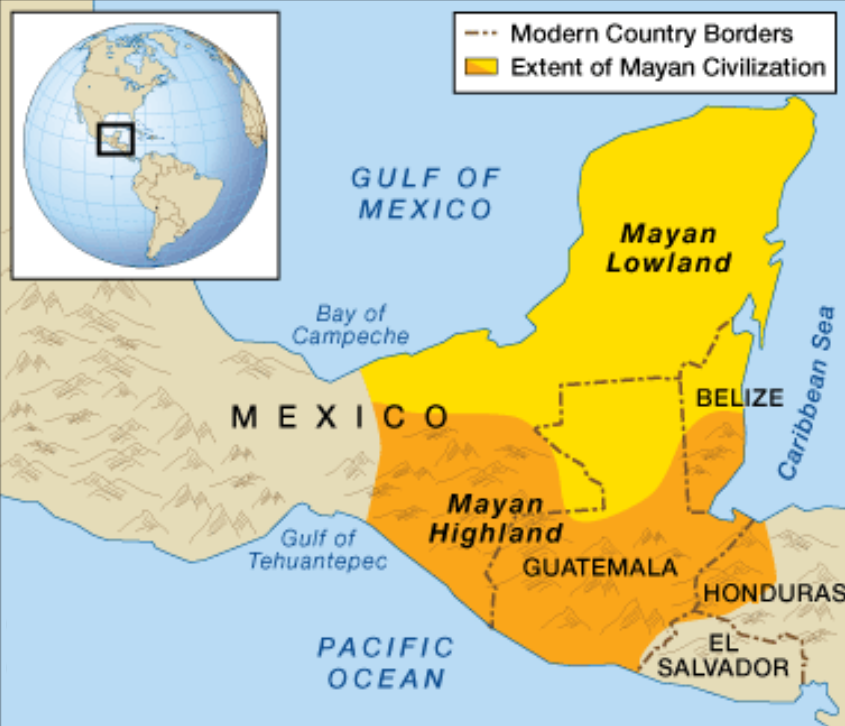Maya Civilization | 08 Jan 2022
Why in News
According to a new study the Maya civilization may have had access to nearly 500 drought resistant edible plants.
- The mystery behind Maya civilization's sudden fall from glory still eludes us. Scientists have long suspected that drought pushed its people towards starvation.
- The Maya people faced starvation because of their dependence on drought-sensitive crops such as corn, beans and squash.
Key Points
- About:
- The Maya are an indigenous people of Mexico and Central America who have continuously inhabited the lands comprising modern-day Yucatan, Quintana Roo, Campeche, Tabasco, and Chiapas in Mexico and southward through Guatemala, Belize, El Salvador and Honduras.
- The Maya civilization originated in the Yucatan Peninsula. Known for its monumental architecture and an advanced understanding of mathematics and astronomy.
- The rise of the Maya began about 250 CE, and what is known to archaeologists as the Classic Period of Mayan culture lasted until about 900 CE. At its height, Mayan civilization consisted of more than 40 cities, each with a population between 5,000 and 50,000.
- But then, suddenly, between 800 and 950 CE, many of the southern cities were abandoned. This period is called the collapse of the Classic Maya civilisations, puzzling modern-day scientists.
- Special Features:
- As early as 1500 BCE the Maya had settled in villages and had developed an agriculture based on the cultivation of corn (maize), beans, and squash; by 600 CE cassava (sweet manioc) was also grown.
- They began to build ceremonial centres, and by 200 CE these had developed into cities containing temples, pyramids, palaces, courts for playing ball, and plazas.
- The ancient Maya quarried immense quantities of building stone (usually limestone), which they cut by using harder stones such as chert. They practiced mainly slash-and-burn agriculture, but they used advanced techniques of irrigation and terracing. They also developed a system of hieroglyphic writing and highly sophisticated calendrical and astronomical systems.
- The Maya made paper from the inner bark of wild fig trees and wrote their hieroglyphs on books made from this paper. Those books are called codices.
- The Maya also developed an elaborate and beautiful tradition of sculpture and relief carving.
- Architectural works and stone inscriptions and reliefs are the chief sources of knowledge about the early Maya.
Other Ancient Civilizations
- The Incan Civilization- Ecuador, Peru, and Chile
- The Aztec Civilization- Mexico
- The Roman Civilization- Rome
- The Persian Civilization- Iran
- The Ancient Greek Civilization- Greece
- The Chinese Civilization- China
- The Ancient Egyptian Civilization- Egypt
- The Indus Valley Civilization- Northeast Afghanistan to Pakistan and northwest India
- The Mesopotamian Civilization- Iraq, Syria, and Turkey

